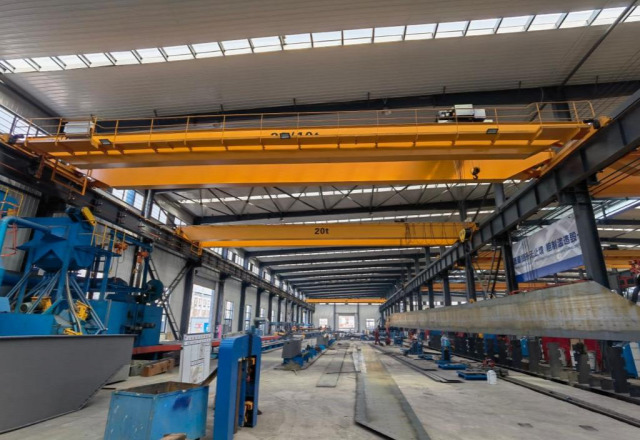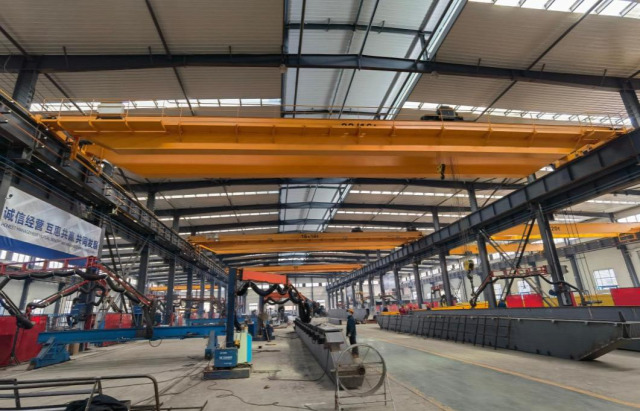When it comes to purchasing a 30-ton overhead crane, understanding the key components and their contribution to the overall price is crucial. The price of an overhead crane varies based on several factors, including the specifications, features, and quality of its components. In this article, we will explore the essential components of a 30-ton overhead crane and how each contributes to its price. By the end, you’ll have a clearer understanding of what drives the cost of these powerful machines and how to make an informed purchasing decision.

1. The Crane Structure
1.1 Material Quality
The crane structure, also known as the frame or chassis, is the foundation of the overhead crane. It provides support for the crane's other components, including the hoist and trolley. The materials used for the crane structure, such as high-strength steel, significantly impact the 30 ton overhead crane price. High-quality materials ensure durability and safety, but they also come at a higher cost. Typically, manufacturers use welded steel plates and profiles, and the quality of welding plays an essential role in the overall structural integrity.
1.2 Design and Complexity
The design complexity of the crane structure also influences its price. A single girder design is generally more affordable than a double girder structure, but the latter offers higher lifting capacity, such as in a 30-ton crane. The more complex the design and engineering, the higher the price, as it requires more material and time to fabricate.
2. The Hoist Mechanism
2.1 Hoist Motor
The hoist mechanism is responsible for lifting and lowering the load. It includes the hoist motor, which plays a significant role in determining the crane's price. The power and capacity of the motor depend on the weight it needs to lift and the speed required for the operation. A higher-power motor with enhanced capabilities will come at a higher cost.
2.2 Gearbox and Brakes
The gearbox and braking system in the hoist mechanism are also critical components that affect the crane's price. The gearbox transfers the motor's power to the lifting drum, and the quality of this component affects the performance and longevity of the crane. The brake system ensures the load remains stable when suspended, contributing to safety. Higher-quality, more durable gearboxes and brakes will naturally increase the price of the crane.
2.3 Lifting Rope and Drum
The lifting rope and drum are integral parts of the hoist mechanism. High-quality steel ropes that are designed to handle heavy loads are essential for ensuring smooth operation. The drum, which stores the rope, needs to be precisely engineered to prevent wear and tear. Both the material and manufacturing quality of these parts contribute to the overall cost.

3. The Crane Trolley
3.1 Trolley and Travel Mechanism
The trolley is responsible for moving the hoist mechanism along the bridge girder of the crane. The travel mechanism is powered by electric motors and plays a crucial role in the crane's efficiency. The design and material quality of the trolley, as well as its bearings and travel wheels, significantly affect the price of the crane. A more robust and efficient travel mechanism will result in a higher crane price.
3.2 Track and Rail System
The rail system that supports the trolley is another important factor in the overall overhead crane cost. The quality of the tracks, the rail design, and the alignment play a role in determining the stability and reliability of the crane’s movement. Custom tracks and additional safety features, such as anti-collision devices, will increase the price of the crane.
4. Control System
4.1 Control Mode
The control system of a 30-ton overhead crane is critical for ease of operation and safety. The control system can include a variety of options such as ground control, cabin control, or remote control. More advanced systems like radio remote controls allow operators to work from a safe distance and offer more flexibility, which drives up the price.
4.2 Automation and Safety Features
Automation features, such as load sensors, anti-sway mechanisms, and automated speed control, significantly improve the performance of a crane. These safety and efficiency features are essential for enhancing productivity and ensuring operator safety. While they can increase the crane's upfront cost, they can also result in long-term savings by reducing the likelihood of accidents and improving operational efficiency.
5. Power Supply System
5.1 Electrical Components
The electrical components of an overhead crane include the power supply system, the wiring, and the control panels. The quality of these components affects the crane’s reliability and safety. Overhead cranes require reliable electrical systems to ensure smooth operation, and the price increases with higher-quality, more durable components. The presence of energy-efficient electrical systems also contributes to the price but can lead to energy cost savings in the long run.
5.2 Power Source Options
There are different power sources available for overhead cranes, including electric, diesel, and hybrid options. For a 30-ton crane, an electric power supply is commonly used. However, some applications require specific power needs or environmental considerations, which may influence the choice of power source. Diesel-powered cranes or hybrid cranes may have higher costs due to the complexity of their power systems.
6. Safety Features
6.1 Load Sensors and Limit Switches
Safety is a top priority when it comes to overhead cranes, and this is reflected in the inclusion of various safety features, such as load sensors and limit switches. These features ensure that the crane operates within its capacity, preventing overloading and minimizing the risk of accidents. The inclusion of advanced safety technologies increases the cost of the crane, but it also ensures safe and efficient operations.
6.2 Anti-Sway Mechanisms
Advanced safety features like anti-sway mechanisms help to reduce load swinging and ensure more precise and controlled movement. Anti-sway technology requires specialized equipment and controls, which adds to the overall price of the crane. However, these mechanisms greatly enhance performance and are a critical consideration in environments where precision is vital.
7. Additional Custom Features
7.1 Customization Options
Customization plays a significant role in the price of a 30-ton overhead crane. Factors such as crane span, lifting height, and additional features (e.g., extra-long cantilevers or specialized lifting attachments) can influence the final cost. Customization ensures that the crane meets the specific needs of the application, but it also comes with a premium price tag.
7.2 Upgrades and Modifications
As industries evolve and demand higher efficiency and more specialized operations, crane owners often choose to upgrade their equipment. Adding features such as a higher lifting height, faster speeds, or advanced hoisting mechanisms can raise the price. Additionally, the cost of replacing or upgrading parts in the future must be considered when budgeting for a 30-ton crane.
Conclusion
In summary, the price of a 30-ton overhead crane is influenced by several key components, including the crane structure, hoist mechanism, trolley system, control system, power supply system, safety features, and additional customization options. Each of these factors plays a vital role in determining the crane’s performance, safety, and durability. When purchasing an overhead crane, it is essential to understand the contribution of each component to ensure that you get the best value for your investment. By carefully considering your specific needs and working closely with manufacturers, you can find a 30-ton overhead crane that delivers optimal performance at a reasonable price.

